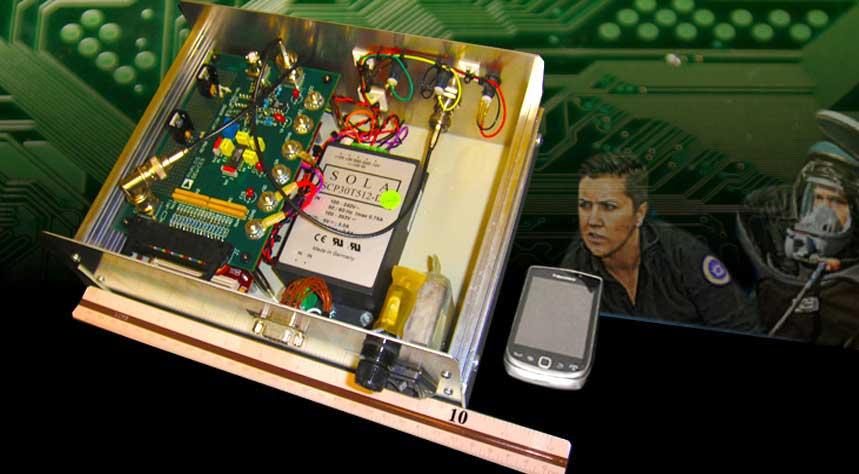It has often been noted that training for first responders needs to be done in the most realistic way possible. Currently, this "train as you fight" approach is not consistent with the need to use real radiation sources. Thus, often different sources are used making the exercise less realistic and all sources are required to be under positive control which usually means a person is nearby to assure control of the source, thus, limiting the training value of the exercise. The use of substitute sources is not the ideal solution, but is one that is an improvement over other current options.
The technology that is available has the capability to inject realistic radiation detection spectra into the amplifier of a radiation detector and produce the all the observables that are available with that radiation detection instrument; count-rate, spectrum, dose rate, etc.
The system uses the capability of LLNL to generate the source output for virtually any source and determine the flux from that source at any point in the area of a training exercise. Based on the location of a participant in the exercise the appropriate count rate and spectrum is generated and injected into the amplifier of the radiation detection device at that specific location. Thus, this system can generate and use both distributed sources and point sources for any isotope or mixtures of isotopes needed for an exercise. The first responder in the exercise will see the count rate, spectrum, and/or dose rate on his radiation detection instrument that would occur if the point and /or distributed sources were actually present.
This approach provides the most realistic approach to training of first responders using radiation detection instruments. Thus, exercises with teams of responders can participate in an exercise and the radiation detector of each participant will respond with the radiation measurement at each point in the exercise as if the real radiation sources were present.
It is envisioned that this type of approach can be used with other types of measurement instruments such as chemical and biological weapon detectors and also seismic detection instruments that might be used in exercises conducted by the Comprehensive Test Ban Treaty Organization for aftershock measurements.
Thus, this approach is applicable to any instrument that is measuring specific physical quantities and cannot be easily determined without scientific instruments.
This approach has the potential to greatly improve the fidelity of emergency response exercises of many types. The increased reality will be a great benefit in training responders and inspectors in far more realistic training exercises.
| Feature | Benefit |
|---|---|
| Simulates complex radiation dispersal incidents for training improving the fidelity of exercises | More realistic training of inspectors using their actual radiation detection instruments |
| Eliminates the need to place and observe sources during exercises | Reduced costs and increased fidelity in conducting radiation detection exercises |
| Can be applied to numerous other detection activities such as chemical and biological weapons training, and CTBTO field exercises | The technology is suitable for many first responder and inspector applications. |
A prototype of this detection simulation system has been built and tested. The main effort to provide a system for use by first responders is to miniaturize the electronic package required to do the inject of the signals. Much of this has been simulated on a tablet computer but needs to be transferred to a specialized miniature processors.


